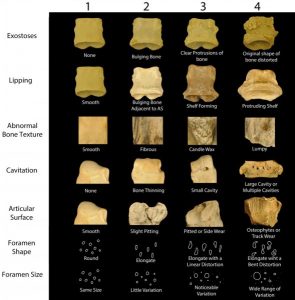
While rhino species evolved and increased in size over 50 million years, their bones may have strained to support their massive and active bodies, according to a study published February 3, 2016 in the open-access journal PLOS ONE by Kelsey Stilson from the University of Chicago and colleagues from the University of Oregon.
The signs of bone health issues, like bone degeneration, inflammation, and infection have been observed in the bones of many extinct North American and living African and Asian rhino species. Scientists are interested in exploring the relationship between animal size, bone health, and bone function in an evolutionary context. The authors of this study evaluated seven physical indicators of bone health, rhino mass, and bone structure in six extinct and one living rhinoceros species from 50 million years ago to the present. For context, non-avian dinosaurs went extinct around 65 million years ago.
The authors found the incidence of osteopathology increased from 28% to 65-80% as new species evolved. The only living species in this study, the black rhino, displayed 50% fewer osteopathologies than the more derived extinct taxa. The researchers also found that with increasing body mass, indicators of disease in the bones also significantly increased. The authors suggest these results may reflect a part of the complex system of adaptations in rhinos over millions of years, where increased mass, running, and/or increased life span are selected for, to the detriment of long-term bone health. The authors say this work has important implications for the future health of hoofed animals and possibly even humans.
Reference:
Kelsey T. Stilson, Samantha S. B. Hopkins, Edward Byrd Davis. Osteopathology in Rhinocerotidae from 50 Million Years to the Present. PLOS ONE, 2016; 11 (2): e0146221 DOI: 10.1371/journal.pone.0146221
Note: The above post is reprinted from materials provided by PLOS.










